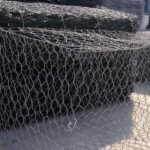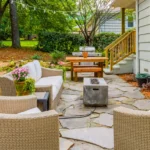As bookworms, creating a home library is the ultimate dream. You need a private place in your home, where you can just curl up for hours and get lost in a real book. This library should be according to your taste and home decor. You probably have concepts on how to create and design this dream library at home, but bringing this design to life requires careful planning and home restructuring.
You want your library to be the envy of other bookworms, and at the same time, you do not want to clutter your home.
Below are five ways to help make your dreams of having a library in your home come true. Even though these ideas are sure routes by which you can get great aesthetics, remember that it is your home, so the library should be set according to your style and home space.
Choose Your Space
Finding the right location for your study is the first tip. You want to find somewhere remote, away from all the noise; a corner where you can read for hours without any external disturbance. Depending on your home design, it might be an entire room, your home office, or just a tiny space of about one square footage. It doesn’t matter.
Just make sure that wherever you end up choosing, there is enough light to help you read.
Comfort
Whether you decide to put a chair in your nook, or several pieces of furniture, what matters most is your comfort. Imagine you are curled up on a well-cushioned chair in your study, lost in Romeo and Juliet’s tragedy book, would that not feel absolutely cozy? Good library furniture should be comfortable and stylish, but it also needs to be functional. For instance, bookcases should be deep enough to accommodate your books, and chairs should provide good back support. Desks should have plenty of surface area for writing or working on a laptop. Take a look at some local libraries for design ideas. Your children’s school might have really good school library furniture and there is no reason why you couldn’t incorporate similar furniture into your home library.
To enhance your convenience, you can splurge on a wool rug or throw pillows for the furniture.
Take Inventory
After finding the perfect space, the next step is to take inventory. Make an account for all the books you have in your present catalogue while keeping in mind that your book collection is growing and that you plan to purchase another good book in the nearest future.
You want to make sure you have enough storage for all your reads, including those you haven’t bought yet.
By now, based on the number of materials in your inventory, you should already have a good idea of how to store them. If they are quite a few, you might not need more than a single shelf to store them.
Store Your Books
Storing your books is very important. You want to keep them away from natural light and away from environmental elements. Shelves provide an easy way of storing books, and there are so many creative routes of building these shelves to fit the style and general aesthetics of your spaces.
If your space is quite small, you can use one-level, floating shelves to display your books. If your book collection is large, you will need to create a large shelf that will probably take up an entire wall or more.
It can get a little hard for large libraries to find books, so it is important to use the Dewey decimal classification system while shelving to ensure you locate books easily. Make sure your shelves are properly secured near a vertical surface to avoid any accidents, and don’t go cheap in this area by purchasing softwood; you don’t want your shelves bowing under the weight of all your books.
Proper Lighting
Good lighting is crucial, as you don’t want to squint your eyes at night time to make out the words on the page you are reading.
When choosing the perfect reading corner, it is crucial to pick a position that favors natural light the most, as you will need this during the day. Choosing the perfect lighting is not difficult, and it does not have to be expensive. Even while on a budget, you can get decent lighting for your study.
Accent lighting is great if you want to illuminate a particular spot, but it is better to spend on fluorescent lamps, and other task lights, for a better reading experience. Ambient and task lights are essential in your library because they provide a more focused light than accent lighting.

Conclusion
Instead of splurging exorbitant amounts of cash on hiring designers to help build your libraries, you can save that money and build yourself the perfect one.
What you want is a personal oasis where you can attain some modicum of peace after a very long day; you don’t need all the money in the world to do it. Make your dream a reality today, and start this creative project!






